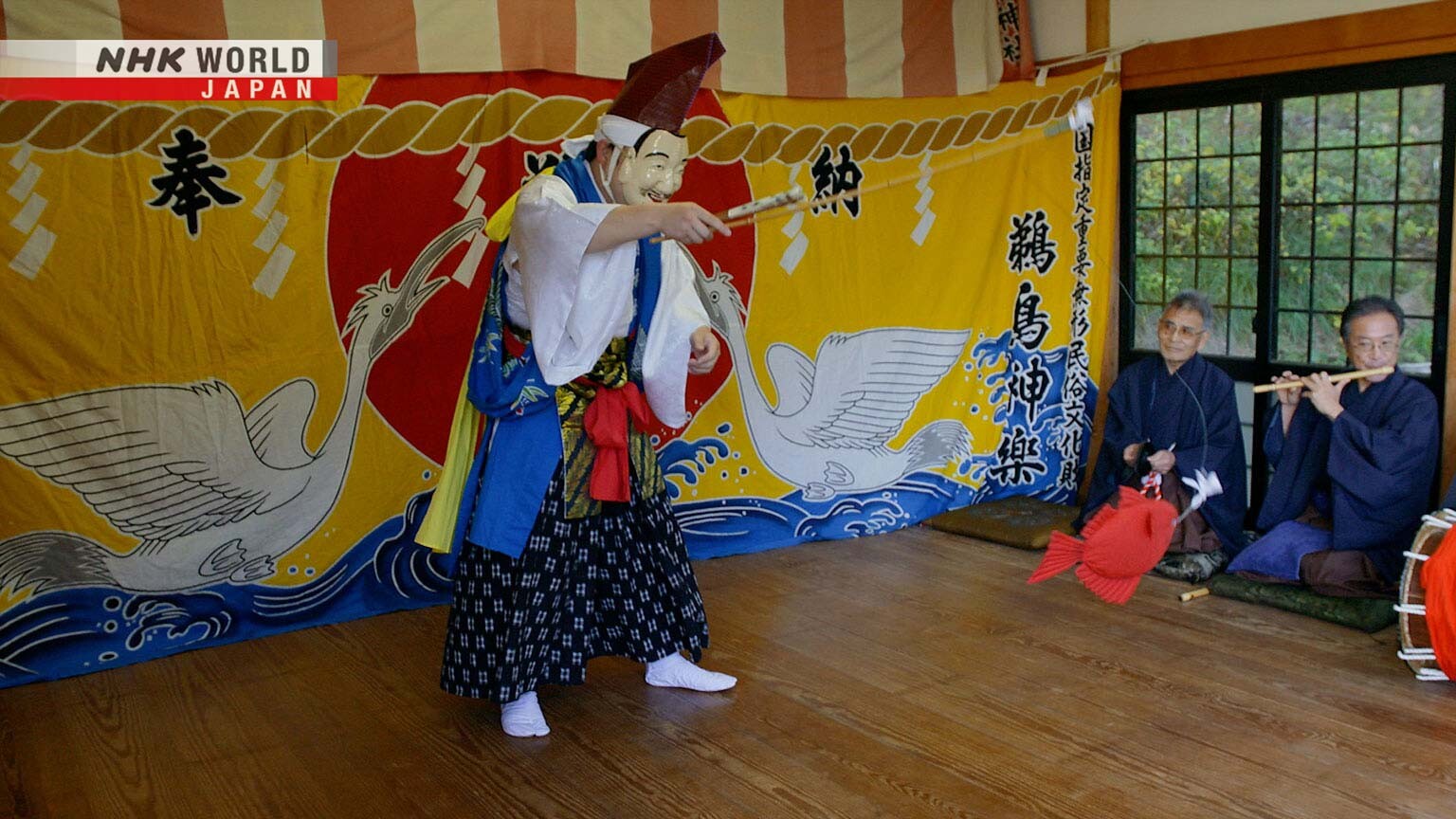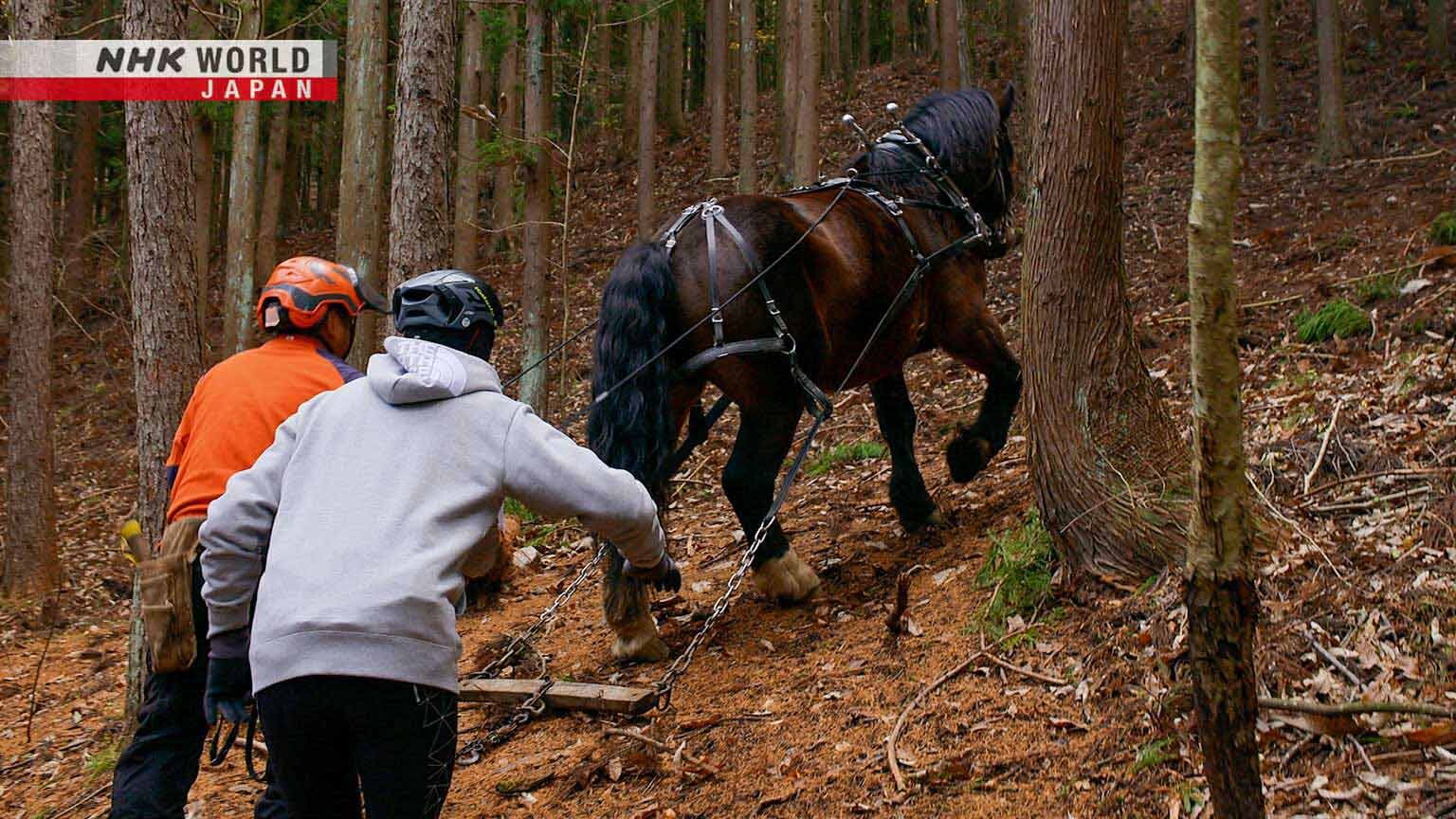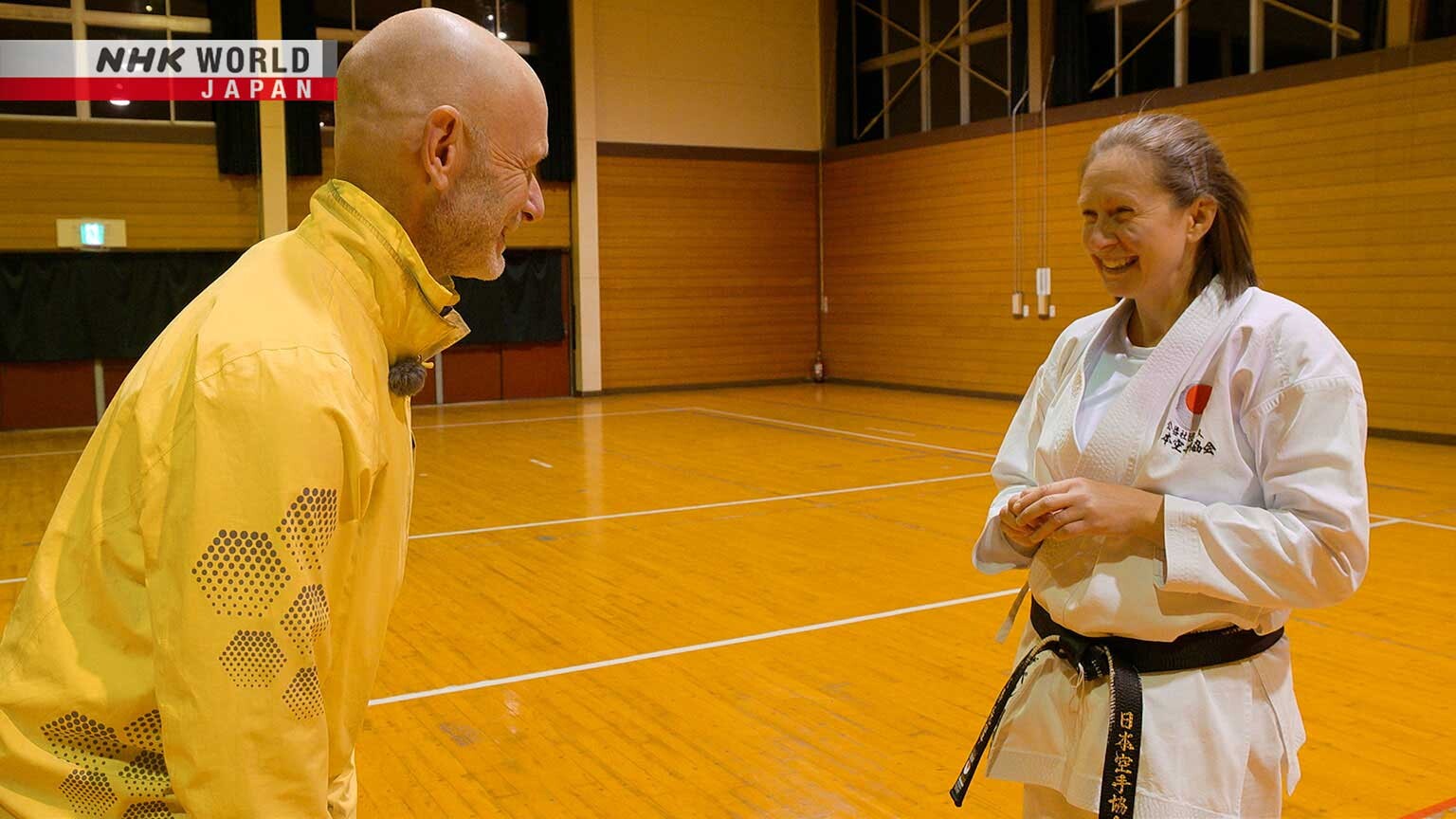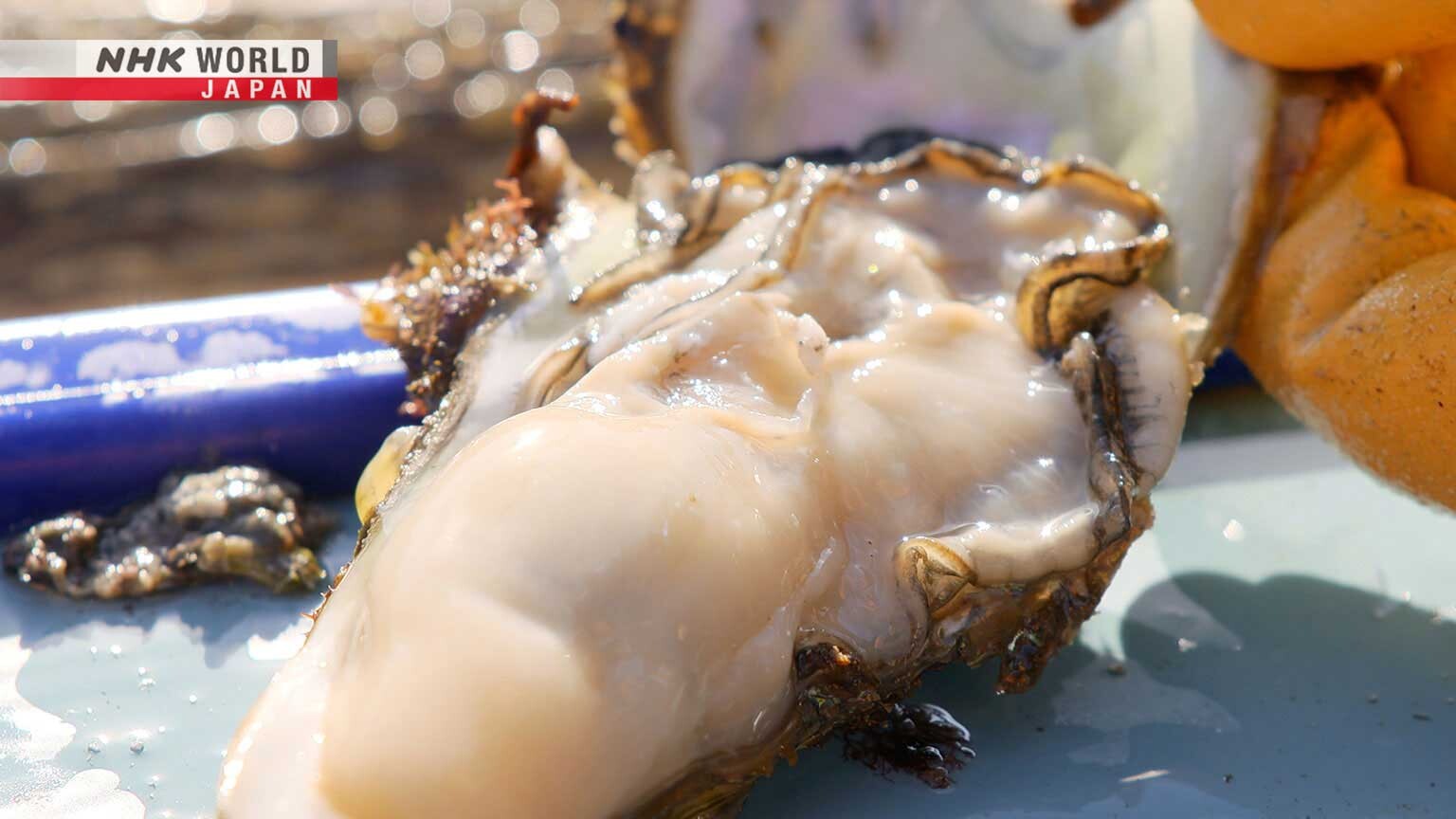Sanriku - A Coast Reborn
The Sanriku Coast was the area hardest hit by the massive earthquake and tsunami of 2011. Its restored communities are rediscovering their local traditions and the unique beauty of this landscape.




Transcript
The best way to discover little-known sights and make even familiar places feel brand new, is to go exploring by bicycle.
Today we're visiting the Sanriku Coast, in northeastern Japan.
This is a jagged coastline, sheltering peaceful bays rich in marine life.
So meaty!
Some here are reviving the old ways, with an eye to improving the future.
Sanriku was the area hardest hit by the great earthquake and tsunami of 2011.
Reconstruction continues, aided by many people who moved here to help.
I love being part of a close-knit community, where everyone looks after each other.
I feel I was meant to live here.
What can experiencing disaster tell us about life?
Come with us as we find out, on a 400-kilometer ride through Sanriku.
The city of Kuji lies on the Pacific coast in Iwate.
Outside the railway station, our cyclist is checking his bike.
Hi, everyone! I'm James.
It's a beautiful morning, and I can't wait to show you around the Sanriku Coast.
James Hobbs is from England.
For the last 30 years he's been living here in Iwate, where he's a professor at a medical university.
James and his family lived through the great 2011 disaster.
Our ride starts from the north of the Sanriku coast.
And there we go! There's the sea!
We're right on the coast now.
A seagull up there following me.
Look at those rocks, they're beautiful.
I wonder how many tens of thousands or millions of years it took to form those.
The northern part of Sanriku was formed by an ancient upheaval of the ocean floor.
Ah, look at the scenery: spectacular already!
Beautiful!
Wow, steep... alright and come on!
Yeah, I made it! Wow!
This part of the coast was heavily damaged by the great tsunami.
It's now protected by massive sea walls.
Alright, it looks like a few boats are in.
I can see a few people walking around.
I guess they must be landing the morning's catch.
We'll pop down there and have a look, see what they've caught.
Wow, loads of them!
Loads of them.
Look at all those... boy!
Fudai is an old fishing port, and most of its 2,500 residents still work in the fishing industry.
Today, the boats have brought back a huge haul of amberjack.
James has been told of a special shrine, where the fishermen worship.
And here we go... made it!
Unotori Shrine has a history going back over 1,200 years.
The fishermen pray here for good catches and safety at sea.
Even the shrine's sacred "shimenawa" ropes are made from fishing nets.
It looks like some kind of dance or performance.
Go and have a look?
That's interesting; they've got some pretty young guys doing this.
Unotori Kagura is a sacred dance tradition, that began here about 300 years ago.
Sasayama Hideyuki works at the Fudai Village Office.
In his spare time, he teaches Unotori Kagura.
After the left turn, keep your right arm off your body.
Use bigger movements so the audience can see.
Your left hand can go high. Relax!
Don't bend your elbow, stretch it more.
Excuse me, may I interrupt for a moment?
You really seem passionate.
- Is it hard to learn kagura?
- Usually, but I loved it as a kid so it came easy.
My students find it hard, but I tell them performing for an audience makes it worthwhile.
The group performs for James, to pray for his safety on the road.
This dance, always popular with fishermen, shows the god of the sea catching a sea bream.
Ah, now I can see your face again.
That was great. Thank you!
Sasayama first encountered Unotori Kagura at age four, when a group came to his village, and he fell in love with the art.
He was 16 when the tsunami devastated this coast, and the kagura stages.
The number of performers fell by over half.
That motivated Sasayama to move to Fudai and devote himself to keeping this tradition alive.
Kagura is my way of thanking those who helped after the disaster.
So the earthquake is why I do this today.
A much loved local tradition, helping to reconnect shattered communities.
James is now riding inland, from Miyako up into the mountains, heading for Tono.
Beautiful route, right along the river.
Oh, look up here!
We've got a field absolutely full of horses here.
Wow, so many of them; look at that!
Horses have historically always been essential to life in Tono, and it's still a leading horse breeding area.
James is going to meet a local expert, one who understands horses better than anyone in Tono.
- Hello!
- Oh, hello.
- What a fine horse. This cart looks really old.
- I use it to haul stuff.
Iwama Takashi was born and raised in Tono.
After working with them all his life, he's committed to preserving the region's horse culture.
It's got a nice rhythm, the way the horse walks.
I put tatami mats on the cart for comfort.
Iwama's horse is now fitted with a special device for hauling felled trees.
Iwama's job today is to remove trees that are growing crooked.
Regular thinning is essential to ensure healthy growth for the forest as a whole.
He's found a tree that needs to be removed.
There it goes. Ah, it's caught.
Transporting goods by horse was common here in the past, and provided work for many in Tono.
In modern times this culture has almost died out, but Iwama is determined to save it.
I wrap the chain around it like this.
Oh, wow!
Unlike heavy forestry machinery, using horses to transport felled trees doesn't damage the soil or vegetation of the hillside.
Oops! Sorry. Go left!
He's clever.
Good job!
(That was) no problem for you, was it?
Excellent work, excellent work, thank you!
Everything goes easier if I just let the horse do it for me.
A smart horse does all the work himself. I hold the reins as backup just in case.
Iwama engages in many activities encouraging people to return to using the horse as a working animal.
Many old methods are still relevant today.
People are starting to rediscover how useful horse power can be for all kinds of things.
I think we are entering an interesting era.
James is now heading down from Tono to a town on the coast.
We're now entering Ofunato.
James has arranged to meet someone at the local gymnasium.
Come, come here... here we go!
Looks like we've got a group of little Japanese warriors.
Sasaki Isabelle, the instructor, is French.
She started karate when she was six, and moved to Japan at the age of 22.
Isabelle came to Ofunato as a volunteer, after the 2011 disaster.
She liked the area so much, she moved here from Tokyo in 2019.
Isabelle lives in a part of Ofunato called Okirai.
This small community of just 2,000 produces some of Sanriku's best scallops.
Isabelle also acts a guide for cycle tours, so she's the ideal person to tell us about the area.
What was it like here before the tsunami?
This area was all built-up. Full of shops, bars and homes.
And now there's nothing left.
You're not allowed to build houses below the height of the seawall.
Those living near the coast were relocated to new homes on higher ground, but village life has still not yet fully recovered.
Isabelle is taking James to a place that's important for Okirai.
This used to be a railway station building and tourist center.
Hello!
As well as the souvenir shops, the building was a popular spot for residents too.
When tourists stopped coming after the earthquake, the shops and building closed.
Isabelle revived this lost community space, adding a kitchen to provide meals and drinks.
There's always someone here to talk to. I'd get so lonely with no one to tell my troubles to.
She knows this area better than me, and helped us rediscover all its good points.
- So you've really become a local.
- I just listen to them and put all that knowledge together.
It's all from them really.
Supporting all Isabelle's activities is her fisherman husband, Jun.
Hello!
- The tsunami must have damaged so much.
- It destroyed our fishing, wrecked the port and our boats.
We had to start again from scratch.
After the disaster, Jun helped rebuild the fishing port.
That was when he met Isabelle, who was there in a volunteer program.
They married in 2020.
He's a really positive person in every way.
I think we make a good match because both of us are a bit odd, different from most people.
You have so much energy and ability, you could have gone anywhere, done anything.
- But you decided to settle here, in this place.
- I feel I was meant to live here.
And I love being part of a close-knit community, where everyone takes care of each other.
I find it very peaceful and easy to live here.
- That's great. So you're going to stay?
- That's the plan.
James is now in Kesennuma.
Ah, I can see the sea down there... here we go!
Down into Moune Bay... oh, there we go!
Look out on the right there.
Great view over Moune Bay!
You can see some of the... it looks like they fish for oysters down there.
Ah, here we are; I think this is our man.
Let's go and say hello.
Good morning!
- Hatakeyama san? I'm James.
- Pleased to meet you.
Hatakeyama Makoto cultivates oysters in Moune Bay.
James has asked Hatakeyama if he can come along as he harvests his oysters.
Are all these rafts for oysters?
The bay is mostly used for oyster cultivation.
There is some scallop farming too, but what you can see from here is all oysters.
- We're coming to the entrance to Moune Bay.
- It's quite narrow.
The bay itself is wide inside, but the narrow entrance keeps out the big ocean waves.
It's really white.
Very meaty.
Yes, you came at the best season.
"Oishiso desu." (Looks delicious.)
As fresh as oysters come... here we go!
Oh, this is so good!
The real taste of the sea.
What makes these oysters so good?
The secret is in the bay's water.
- Are all these little specks plankton?
- Mostly, yes.
About 200 liters of seawater a day passes through each oyster.
- 200 liters!
- Enough to fill an oil drum.
This bay is said to be especially fertile.
Water flowing from the forests brings nutrient salts that the plankton feed on.
After the tsunami, Hatakeyama noticed some unexpected changes in the local nature.
What happened here?
After the earthquake, there was a government project to repair the broken seawalls and dikes.
But we got them to stop the plan and start demolishing the dikes. That's what you see.
This area was originally farmland reclaimed from tidal flats.
After the earthquake, the ground sank and became marshy,
but it didn't provide a good home for wildlife, because there was no exchange of water with the river.
Hatakeyama persuaded the city to breach the old barrier between river and wetland.
Connected again, the wetland's water quality dramatically improved, and wildlife began to return.
Hatakeyama now focuses on preserving the forest environments around Moune Bay.
We get many ideas from the ocean.
Even when I'm up working in the forests,
I'll be inspired by thoughts of the sea.
Whatever I do, the sea is always on my mind.
To end his trip, James heads up to a spot from which he can look back down over the sea and forests of Sanriku.
Boy, that was a climb.
It was damn hard work.
But I tell what: it was worth it.
It was worth it... for this!
There... look at that!
Okay, so that's the end of the journey, and what a journey it's been!
I've had some fascinating insights into people's lives, I've seen communities that have rebuilt and moved on from the tsunami.
I've learned about how the mountains and the sea are connected, both in nature and in culture.
It's been a wonderful trip, and I hope you've enjoyed it as much as I have.
In the 13 years since the great earthquake and tsunami of 2011, as they struggled to rebuild their communities,
people here have come to a deeper understanding of Sanriku's environment, its true value, and its potential for the future.